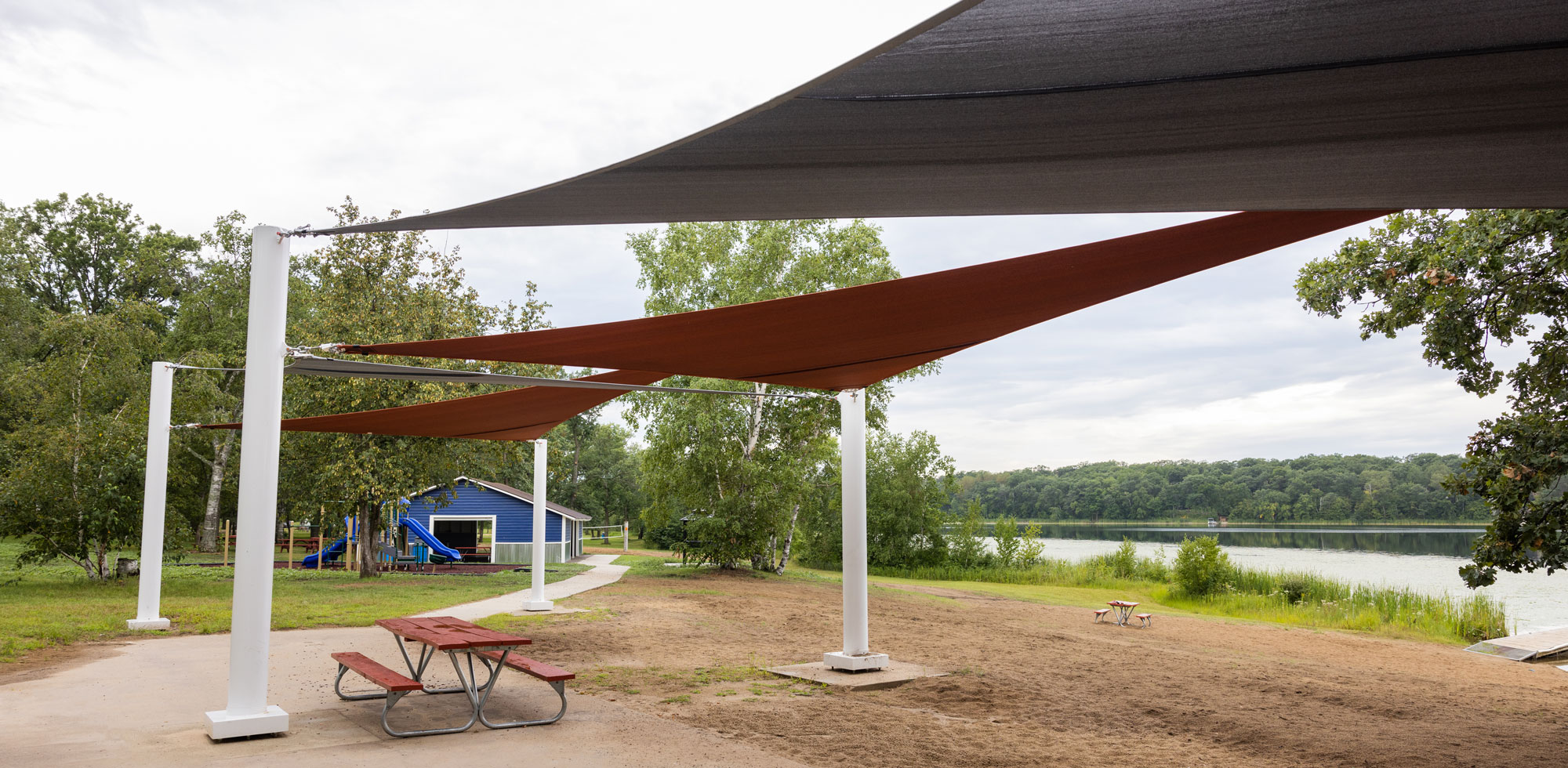
Generosity in Full Bloom
The late Jim Kurpius honors his roots and his beloved hometown
By Lisa Meyers McClintick | Photography by Paul Middlestaedt and John Linn
As an up-and-coming star on the Staples High School football team, 14-year-old Jim Kurpius was hard to bring down. And then poliomyelitis, a viral epidemic that swept the nation in the 1940s and ’50s, stopped him in his tracks. The infection left him fighting to breathe and in an iron lung, battling what was deemed the worst case of polio in the Staples community.
Kurpius lost the use of his legs—and the ability to help his family harvest their farm fields, something he dearly loved. He was given a job at the local feed mill and later was offered a scholarship to the University of St. Thomas where fellow students helped carry his wheelchair up and down stairs in the historic campus buildings.
Kurpius persevered past obstacles, graduated and launched a successful career in financial administration at hospitals in the Twin Cities and California before being recruited by a law firm during the boom of California’s Silicon Valley. He ultimately retired as vice president of operations.
Described as a quiet man, a fearless explorer, and a deep thinker, he never forgot those who supported him and looked for ways to pay his good fortune forward. He also aspired to support his hometown as his parents once did by setting up two philanthropic funds through the Initiative Foundation. One honors his parents, Tracy and Julius Kurpius, and their enthusiasm for gardening. It supports the Living Legacy Gardens on the Staples campus of Central Lakes Community College. The other fund has helped with local scholarships and accessibility improvements at Dower Lake in Staples, reflecting his support for education and his enthusiasm for swimming.
Kurpius passed away in March 2022, but the funds will ensure that his good deeds will endure well into the future.
“He was always happy to help out Staples. That was his true love,” said his wife, Sue Kurpius, from their home in Palo Alto, California. “He said, ‘My happiest days were sitting on the tractor and plowing the fields and smelling the sweet aroma of the earth.”
Gardens Grow on Family Farm Site
These days, the whole community can enjoy the scent of earth and flowers where the Kurpius family farm once stood. The land was fortuitously sold by its post-Kurpius owners to Central Lakes Community College, which developed an Ag and Energy Center at its Staples campus.
The Living Legacy Gardens, started on a five-acre section in 2000, showcase annuals, perennials, herbs, shrubs, vines, fruits, native plants and trees that are hardy to Central Minnesota’s Zone 3 climate. Up-and-coming All-American Seed Selections give gardeners fresh ideas for new flowers and vegetables, summer classes invite children to dig in the dirt and grow their food, and a gathering area near the gazebo encourages picnics and small gatherings.
When Jim’s older brother, DeWayne, and his wife, Elizabeth (“Buzz”), travel from Indiana to summer in Nisswa each summer, they always take their children, grandchildren and other visitors to stroll the garden’s paths. They can still see some of the original willows from their childhood and can recall the sheer joy during a past Ag Center Field Day when Jim was lifted into a new John Deere tractor and able to imagine plowing the family fields again.
“Jim was the one who really inspired everyone,” said Buzz Kurpius. “This was a project he really liked, and he got us excited about it.”
Donors Fund Improvements
Jim Kurpius established the Tracy and Julius Kurpius Fund for the Living Legacy Gardens in 2006. As one of the Foundation’s designated funds, it’s dedicated to a single beneficiary. Kurpius and family members made the first $2,500 contribution. They were able to keep adding to the fund for the next 11 years until the investment profited enough to disburse a $1,200 grant to the gardens. “
A total of $16,295 has been awarded since that year,” said Kate Bjorge, community philanthropy manager at the Initiative Foundation.
Funds like these are especially welcome by nonprofit organizations with a small staff, tight budgets and little free time to pursue grants when they need money. The designated funds offer help without applications or follow-up reports.
“If we want to do anything like rebuild the gazebo or get new plant signs, we can use some of that money,” said Tammy Rick, a horticulture technician who manages the gardens on the Staples campus. “It’s hard to [secure additional funding] from the college budget.”
A recently funded project for new plant labels includes QR codes for quick plant identification, growing tips and even recipes. Staff at the gardens also were able to install a message board and kiosk to welcome the estimated 3,500 annual visitors.
More people like the Kurpius family are setting up both designated funds to benefit singular charities or donor-advised funds that let families recommend grants to a variety of nonprofits. The Initiative Foundation manages fund investments under the umbrella of its Partner Funds program.
“It’s a great vehicle for leaving a legacy—and what an incredible gift for an organization,” Bjorge said. “The Community Philanthropy program disbursed more than $1.5 million in grants through Partner Funds in 2021, nearly 60 percent of which were from donor-advised and designated funds.”
Funds Keep Growing
Donors can set up a philanthropic fund by transferring money, stock or even profits from a particular piece of property.
The Initiative Foundation currently manages about 130 Partner Funds, including eight designated funds and 25 donor-advised funds. Donor-advised funds typically are started by individuals or families who decide when to recommend grants to the causes they care about. The Initiative Foundation ensures legal compliance while managing all of the back-end work, including tax receipts and acknowledgments plus financial tracking and reporting.
Grants can be awarded to nonprofits such as women and children’s programs, faith organizations, educational efforts, or whatever fittingly reflects the donors’ values and experiences.
In years past, Jim Kurpius would make solo road trips back to Minnesota from his California home with a modified vehicle that used hand controls. He would stop at the Initiative Foundation’s Little Falls office to discuss ways to invest in his hometown.
Through a stock transfer, he created the James A. and Susan J. Kurpius Family Fund in 2018 as a donor-advised fund. That means the family remains active in deciding where to bestow any financial gifts to the region.
Support from the fund has gone to Staples-Motley Dollars for Scholars and to the Staples Motley Area Community Foundation (SMACF) to help with the Dower Lake improvement project.
“His support was the largest single donation,” said Mike Gold, a former SMACF advisory team member. It helped fund a sidewalk that now makes it possible for anyone on wheels or with a walker to reach the playground, picnic pavilion and the beach and dock—perfect for cooling off on hot summer days. Swimming was a sport Kurpius enjoyed and could still do after polio.
“[Jim] felt he was given a lot of chances,” his wife Susan said, “so he was good about giving back.”
